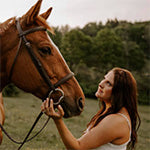As the days grow shorter and cooler weather replaces summer’s heat, fall becomes a pivotal season for horse owners to focus on pasture management.
Certain fall pasture maintenance items protect forage quality through the winter, preserve pasture health, and set the groundwork for even better grazing next year.
In this article, you’ll discover why fall pasture management matters, how seasonal forage transitions affect your pastures, practical steps for assessing fall pasture condition, best-practice tips, and guidance on navigating equine nutrition in the fall with support from Tribute® Equine Nutrition.
Why Fall Pasture Management Matters
Managing pastures during the fall plays a vital role in safeguarding your horses’ health, meeting their nutritional needs, and preserving the quality of your grazing land for the year ahead.
When you handle fall chores effectively, you set the stage for robust spring pasture growth, enable safe and efficient winter grazing, and reduce many of the health risks that accompany seasonal transitions.
Fall offers the perfect window for several key pasture improvements, including:
-
Sampling soil: After sampling, applying lime or fertilizer according to laboratory results balances nutrient levels, allowing spring forage to thrive.
-
Overseed bare or thin areas with cool-season grass mixes: This is crucial for boosting grass species diversity and overall productivity for the year ahead.
-
Weed control: Controlling perennial weeds with herbicides is vital because treatments are more effective in the fall and reduce future competition with pasture grass.
-
Resting heavily grazed paddocks: This is important so grasses can replenish their energy reserves before winter dormancy sets in.
Fall pasture management also safeguards horse health. After a frost, cool-season grasses may accumulate high levels of non-structural carbohydrates, increasing the risk of laminitis, especially in susceptible horses.
Rotating pastures and clearing manure in the fall helps decrease parasite life cycles, reducing parasite burdens for spring. Autumn is also when drought-stressed weeds contain concentrated toxins and sugars, so identifying and fencing off—or removing—those plants prevent grazing that can negatively affect horse health.
Finally, many trees (such as maple, cherry, and plum) drop wilted leaves that can become poisonous as temperatures cool. A fall sweep to remove this debris protects horses when pasture forage becomes scarce.
Well-managed fall pastures can overall extend the grazing season, potentially easing hay feeding demand before winter.
Understanding Seasonal Forage Transitions and How They Affect Horses
Fall pastures echo spring’s transformation—brown, dormant vegetation fades as fresh green grass and other plants push up through the soil.
As summer grasses fade and cool-season shoots appear, fall pastures enter a nutritional “transition zone” that demands careful management. Warm-season species cease growing once the soil temperature drops below about 60°F (16°C), whereas cool-season grasses are not yet mature enough to withstand heavy grazing.
Because this young grass growth is lush and high in non-structural carbohydrates (NSC), it is essential to introduce horses to it gradually to avoid digestive upset, colic, laminitis, or metabolic flare-ups. Allow just 15 minutes of grazing for the first three days of this growth, then add 15 minutes per day until Day 16. When turnout time reaches 3½ hours, if all goes well, full-time access turnout can follow.
However, it's not ideal to let horses graze plants shorter than 6 inches (15 cm). Be ready to move horses to a sacrifice paddock—stocked with hay and water—whenever pasture height drops below 3–4 inches, or when trampling, wet weather, or reseeding threatens pasture recovery.
Extra caution is needed after the season’s first hard frost (below 32 °F/0 °C). This “killing frost” can trigger a temporary NSC spike in both grasses and legumes, so pulling horses off the pasture for about a week and feeding hay until subsequent freezes pose less of a risk is a best practice.
Throughout fall, monitor forage availability, supplement declining pasture grass with high-quality hay, maintain constant access to fresh water, and continue rotating fields and removing manure to curb parasite loads.
These steps let the pasture establish firm root reserves for winter while protecting horses from the sudden dietary shifts that fall often brings.
Assessing Your Horse Pasture in the Fall
Start fall pasture assessment and management by taking stock of your pasture forage.
When cooler nights and shorter days drop soil temperatures below 65°F (18°C), warm-season grasses like Bermuda grass and bahiagrass slow and eventually stop growing. At the same time, cool-season species—such as ryegrass, Kentucky bluegrass, and timothy—begin to thrive. Northern regions make this switch earlier than southern ones, so adjust your schedule to your local climate.
Take soil samples once the primary growing season ends. Dry, stable soils give the most accurate results. Send samples to your extension office or a certified lab, then fertilize based on their recommendations. Often, only nitrogen is needed, since manure typically supplies phosphorus and potassium.
Testing manure before spreading it is also a great way to maintain pastures in the fall. Spread tested manure only if you have at least two acres per horse. Otherwise, arrange for removal to avoid parasite buildup.
Fall Horse Pasture Management Best Practices
When you tackle fall chores, keep grazing heights in the safe zone, ease horses onto new green growth, and address soil tests, weeds, seeding, and manure. That way, you make the most of today’s forage while priming your pastures to stay healthy through winter dormancy and rebound strongly next spring.
Create a Fall/Winter Sacrifice Paddock
Create a sacrifice paddock—a dry lot with shelter that can be easily stocked with hay and water when needed.
This allows you to shift horses there whenever rain, frost, overgrazing, or winter turnout threatens tender or dormant grass, allowing main pastures to rest and retain the benefits of your fall prep. Rest any overgrazed fields for at least 30 days to enable them to rebuild their nutrient reserves.
Graze at the Right Height
Turn horses out only once the grass reaches 6 inches (15 cm) and keep it between 6 and 9 inches (22 cm) by mowing anything taller.
Move horses to a sacrifice paddock whenever the pasture drops below 3–4 inches, or when wet weather, frost, seeding, or when extra pasture recovery time is needed.
Appropriately Match Horses to Pasture Acreage
Start with roughly two graze-ready acres per mature horse, then adjust for local conditions. Lush, rainy regions can often support 1.5–2 acres per horse, while semi-arid areas may need 3–5 acres because regrowth is slower.
Warm-season pastures in the Southeast perform well in summer but stall in winter, so plan on 1.5–2.5 acres plus a sacrifice lot.
Intensive rotation (several small paddocks rested 25–30 days) can lower requirements to about one acre per horse, whereas easy keepers prone to laminitis may need extra space or a dry lot.
Weed Control and Grass Seeding
Late summer and early fall also offer the best seeding window.
Use a drill or no-till seeder to plant cool-season grasses before mid-September—ideally before Labor Day in the Northeast and Mid-Atlantic—when soil moisture is steady and weed pressure is low. Be sure to keep horses off newly seeded areas until they are well-rooted the following spring. If most of your pasture turns brown by late fall, consider reseeding.
Mow annual and biennial weeds before they flower so they never drop seed, and use spot-applied herbicides when needed, always following the label’s directions, safety precautions, and grazing restrictions. Spring and summer herbicide treatments work well on these short-lived species, but mowing three or four times a season often provides all the control you need.
Perennial weeds require a two-pronged approach. First, continue mowing throughout the growing season to prevent seed production. Then, spray herbicide in early fall (around September 1), when the plants are pulling sugars and the herbicide can be absorbed into their roots for winter.
While nothing can prevent the complete elimination of every weed, a thick, well-managed pasture will outcompete most weeds and keep their numbers low.
Navigate Horse Pasture Management with Tribute® Equine Nutrition
Tribute can help your fall-pasture game plan with products that fill nutritional gaps that fall forage can leave behind.
Essential K®, for example, is a low-NSC ration balancer that delivers concentrated amino acids, vitamins, and trace minerals without extra calories, which can help fill these nutritional gaps.
For moderate to harder keepers that are prone to common fall-related conditions such as laminitis, Kalm ’N EZ® Pellet keeps starch and sugar to a minimum (about 13.5 % NSC) while adding extra fiber and fat for steady energy.
Working with Tribute’s team for a free, personalized feed plan, allows you to match the perfect feed to your hay and pasture analysis, ensuring every horse heads into winter with a balanced diet and a healthy digestive tract.
References
Penn State Extension. (n.d.). Pasture management by the seasons. https://extension.psu.edu/pasture-management-by-the-seasons
Rutgers New Jersey Agricultural Experiment Station. (n.d.). FS1340: Non-structural carbohydrates and equine warm-season grass pastures. https://njaes.rutgers.edu/fs1340/
Penn State Extension. (n.d.). Fall forage management tips. https://extension.psu.edu/fall-forage-management-tips
University of Minnesota Extension. (n.d.). Managing established horse pastures. https://extension.umn.edu/horse-pastures-and-facilities/managing-established-horse-pastures
University of Minnesota Extension. (n.d.). Fall and spring pasture to-do lists. https://extension.umn.edu/horse-pastures-and-facilities/fall-and-spring-pasture-do-lists


